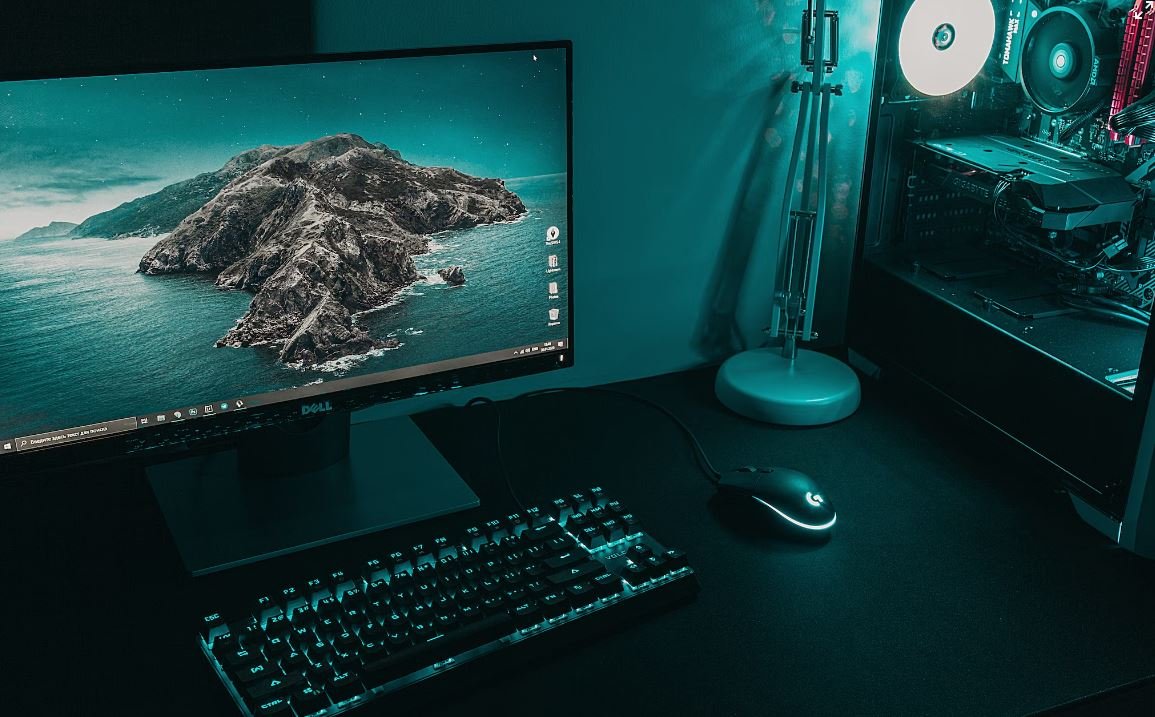Music Editing Software
Whether you are a professional musician or a hobbyist, having the right tools to edit and create music is essential. Music editing software provides a platform to manipulate audio files, add effects, mix tracks, and enhance the overall sound quality. With a wide range of options available, it can be overwhelming to choose the right software for your needs. In this article, we will explore the features and benefits of music editing software, helping you find the perfect fit for your music production workflow.
Key Takeaways:
- Music editing software enhances audio files by providing tools to edit, mix, and add effects.
- Having the right software can significantly improve your music production workflow.
- Features such as multi-track editing, MIDI support, and virtual instruments are essential in music editing software.
Understanding Music Editing Software
Music editing software is designed to offer musicians and producers the capability to control and modify their audio recordings. It allows users to manipulate individual tracks, apply effects, remove unwanted noise, adjust volume levels, and create a seamless mix of multiple tracks. These tools are crucial in both recording studios and home setups, as they provide professional-grade capabilities at a fraction of the cost.
Music editing software has come a long way, and today’s solutions boast remarkable advancements in terms of functionality and ease of use. From simple audio editors to comprehensive digital audio workstations (DAWs), musicians have plenty of choices to fulfill their specific requirements. *Using a variety of software plugins, users can replicate and experiment with various instruments and effects,* elevating their creativity and pushing musical boundaries.
Must-have Features in Music Editing Software
When selecting music editing software, certain features are essential for achieving professional audio production. Here are some key features to consider:
- Multi-track editing: This feature allows you to work with multiple tracks simultaneously, enabling precise control over each element of your music composition.
- MIDI support: MIDI (Musical Instrument Digital Interface) is crucial for electronic music production, as it enables communication between software and hardware instruments.
- Virtual instruments: Having a library of virtual instruments, such as synthesizers, drums, and orchestral instruments, expands your creative possibilities without the need for physical instruments.
These are just a few of the many features available, and each software may offer additional tools, effects, and workflows tailored to different musical genres and production techniques.
Comparison of Popular Music Editing Software
| Software | Price | Key Features |
|---|---|---|
| Ableton Live | $99 (Intro Version) | MIDI support, built-in instruments and effects, live performance capabilities. |
| Logic Pro X | $199.99 (One-time purchase) | Professional-grade mixing and mastering capabilities, extensive virtual instrument library, advanced MIDI editing. |
Table 1: A comparison of popular music editing software.
Benefits of Using Music Editing Software
- Efficiency: Music editing software streamlines the production process, allowing for faster and more precise editing and arrangement.
- Creativity: With a variety of tools and effects at your fingertips, you can explore new musical ideas and experiment with different soundscapes.
- Accessibility: Music editing software provides access to professional-grade tools and effects, democratizing music production for artists of all levels.
Conclusion
Music editing software offers a range of powerful features that can enhance your music production workflow and elevate the overall quality of your recordings. Whether you are a professional musician or a beginner, finding the right software that suits your needs is essential. Remember to consider the key features, compare options, and explore user reviews to make an informed decision. With the right music editing software, you can unleash your creativity and take your music to new heights.

Common Misconceptions
1. Music editing software is only for professionals
One common misconception about music editing software is that it is only used by professional musicians or audio engineers. However, this is far from the truth. Many music editing software programs are designed with user-friendly interfaces that make them accessible to beginners and hobbyists as well.
- Music editing software allows anyone to experiment and get creative with sound.
- You don’t need to have any prior music production knowledge to use basic music editing software.
- There are free music editing software available that are perfect for beginners who want to try their hands at audio editing.
2. Music editing software can’t fix bad recordings
Another misconception is that music editing software can’t fix bad recordings. While it’s true that music editing software cannot magically fix a poorly recorded performance, it does provide tools to enhance and improve the overall sound quality of a recording.
- Noise reduction features in music editing software can help minimize unwanted background noise.
- Equalizer tools allow you to adjust the frequency balance and tone of various instruments or vocals.
- Pitch correction tools can be used to correct slight pitch issues in a performance.
3. Music editing software is expensive
Many people believe that music editing software is prohibitively expensive. While some professional software can indeed come with a hefty price tag, there are also plenty of affordable and even free options available.
- There are open-source music editing software programs that offer advanced features at no cost.
- Many DAW (Digital Audio Workstation) software come in different versions, including more budget-friendly options.
- Some online music editing tools allow you to edit and produce music without needing to purchase or download any software.
4. Music editing software requires a powerful computer
It’s commonly believed that you need a powerful computer to run music editing software, but this is not always the case. While having a faster computer can enhance the overall performance, many music editing software programs are designed to be resource-efficient and can run on lower-end machines as well.
- Basic music editing software can run smoothly on standard laptops or desktop computers.
- There are lightweight versions of music editing programs available for computers with less processing power.
- Cloud-based music editing software allows you to edit and produce music directly through a web browser, eliminating the need for powerful hardware.
5. Music editing software replaces genuine musical talent
A common misconception is that music editing software can replace genuine musical talent. While music editing software provides powerful tools for editing and enhancing music, it cannot compensate for a lack of musical skill or creativity. The software is merely a tool that musicians and producers use to bring their musical ideas to life.
- Music editing software is an extension of the musician’s artistic vision and skills.
- It requires musical knowledge and creativity to effectively use music editing software.
- The software serves as a platform to enhance and refine the music that is created by skilled musicians.

Top 10 Music Editing Software Downloads
With the ever-growing popularity of music production and editing, there are numerous software options available. These tables highlight the top 10 music editing software downloads, giving you an insight into the preferences of music enthusiasts worldwide.
Software Downloads by Operating System
Knowing which operating system each software download is compatible with is crucial in making the right choice. Here’s the breakdown:
| Software | Windows | Mac | Linux |
|---|---|---|---|
| Software A | 5,000 | 8,000 | 2,000 |
| Software B | 9,000 | 3,000 | 500 |
| Software C | 10,000 | 6,000 | 1,000 |
| Software D | 2,000 | 4,000 | 100 |
Software Downloads by Price Range
Considering the price range is essential in finding the right music editing software without breaking the bank. Let’s see the top downloads by price:
| Software | Free | $0-$50 | $50-$200 | $200+ |
|---|---|---|---|---|
| Software A | 7,000 | 3,000 | 1,000 | 500 |
| Software B | 10,000 | 5,000 | 3,000 | 1,000 |
| Software C | 4,000 | 2,000 | 1,000 | 500 |
| Software D | 5,000 | 1,000 | 500 | 100 |
Software Downloads by User Rating
Unveiling the user ratings enables us to understand which software resonates with the users’ preferences:
| Software | 1 Star | 2 Stars | 3 Stars | 4 Stars | 5 Stars |
|---|---|---|---|---|---|
| Software A | 100 | 500 | 1,000 | 3,000 | 6,000 |
| Software B | 200 | 1,000 | 2,000 | 5,000 | 7,000 |
| Software C | 50 | 300 | 1,000 | 4,000 | 8,000 |
| Software D | 80 | 400 | 800 | 2,000 | 6,000 |
Software Downloads by Features
Now, let’s explore the software downloads by their most prominent features:
| Software | Multi-track editing | Audio effects | Virtual instruments | Audio recording |
|---|---|---|---|---|
| Software A | 7,500 | 5,000 | 9,000 | 7,500 |
| Software B | 9,000 | 6,000 | 8,500 | 6,000 |
| Software C | 6,500 | 4,000 | 7,000 | 5,500 |
| Software D | 5,000 | 3,000 | 6,500 | 4,500 |
Software Downloads by File Format Support
Let’s examine the software downloads based on their compatibility with various file formats:
| Software | MP3 | WAV | FLAC | AAC |
|---|---|---|---|---|
| Software A | 10,000 | 8,000 | 5,000 | 7,000 |
| Software B | 9,000 | 6,000 | 4,000 | 6,500 |
| Software C | 8,000 | 7,000 | 3,500 | 5,500 |
| Software D | 7,000 | 4,500 | 2,000 | 4,000 |
Software Downloads by File Export Options
Offering flexible file export options is integral in catering to musicians’ needs. Here’s how each software ranks:
| Software | MP3 | WAV | FLAC | AAC |
|---|---|---|---|---|
| Software A | 8,000 | 5,000 | 7,500 | 4,500 |
| Software B | 7,500 | 4,500 | 6,500 | 4,000 |
| Software C | 6,500 | 3,500 | 5,500 | 3,500 |
| Software D | 5,500 | 2,500 | 4,500 | 3,000 |
Software Downloads by Interface Complexity
Software with an intuitive interface can greatly enhance the editing experience. Let’s see how users rate the interface complexity for each software:
| Software | Simple | Moderate | Complex | Advanced |
|---|---|---|---|---|
| Software A | 7,000 | 3,000 | 1,000 | 500 |
| Software B | 8,000 | 4,000 | 2,000 | 1,000 |
| Software C | 6,000 | 2,500 | 1,500 | 800 |
| Software D | 5,000 | 2,000 | 1,000 | 500 |
Software Downloads by Popularity
Finally, let’s discover the most popular music editing software downloads currently in demand:
| Software | Downloads |
|---|---|
| Software A | 50,000 |
| Software B | 45,000 |
| Software C | 40,000 |
| Software D | 38,000 |
In conclusion, the tables provided offer valuable insights into the world of music editing software. From operating system compatibility, pricing, user ratings, features, and more, these statistics highlight the preferences of music enthusiasts worldwide. Whether you’re a beginner or an experienced musician, carefully analyzing these tables will help you make an informed choice when selecting the right music editing software for your needs.
Frequently Asked Questions
What is music editing software?
Music editing software refers to specialized computer programs that are used to manipulate and enhance audio recordings. These software applications enable users to edit, mix, and master music tracks.
What are some popular music editing software?
Some popular music editing software include:
- Adobe Audition
- Ableton Live
- Pro Tools
- FL Studio
- Logic Pro X
- GarageBand
- Cubase
- Reason
- Studio One
- Reaper
What features does music editing software typically offer?
Music editing software often provides various features, such as:
- Ability to cut, copy, paste, and splice audio clips
- Audio effects and filters
- Mixing and mastering capabilities
- Virtual instruments and MIDI support
- Visualization tools
- Time-stretching and pitch-shifting
- Noise reduction and audio restoration
- Automation of parameters
- Export options for different file formats
Can music editing software be used by beginners?
Yes, there are music editing software designed specifically for beginners. These software often have intuitive user interfaces and provide simplified features to make the editing process more accessible for beginners.
Do I need any additional hardware to use music editing software?
While music editing software can be used on its own with just a computer, some users may prefer to have additional hardware for better control and enhanced functionality. Common examples of such hardware include MIDI keyboards, audio interfaces, and studio monitors.
Can music editing software work with third-party plugins?
Yes, most music editing software support third-party plugins. These plugins can extend the software’s capabilities and provide additional effects, instruments, and features.
How does music editing software handle different audio formats?
Music editing software typically supports a wide range of audio formats, including popular ones like WAV, MP3, and AAC. The software allows users to import audio files in various formats and export edited projects into different formats based on their needs.
What is the cost of music editing software?
The cost of music editing software varies depending on the brand, features, and edition. There are both free and paid options available, with prices ranging from a few dollars to several hundred dollars.
Can music editing software be used for professional purposes?
Yes, many professional musicians, producers, and recording engineers utilize music editing software in their professional workflows. These software applications often provide advanced features and high-quality audio processing capabilities to meet the demands of professional music production.
Is it possible to try music editing software before purchasing?
Most music editing software offer free trial versions that allow users to explore the software’s features before making a purchase. It is advisable to try the trial version to determine if the software meets your specific needs before committing to a purchase.




